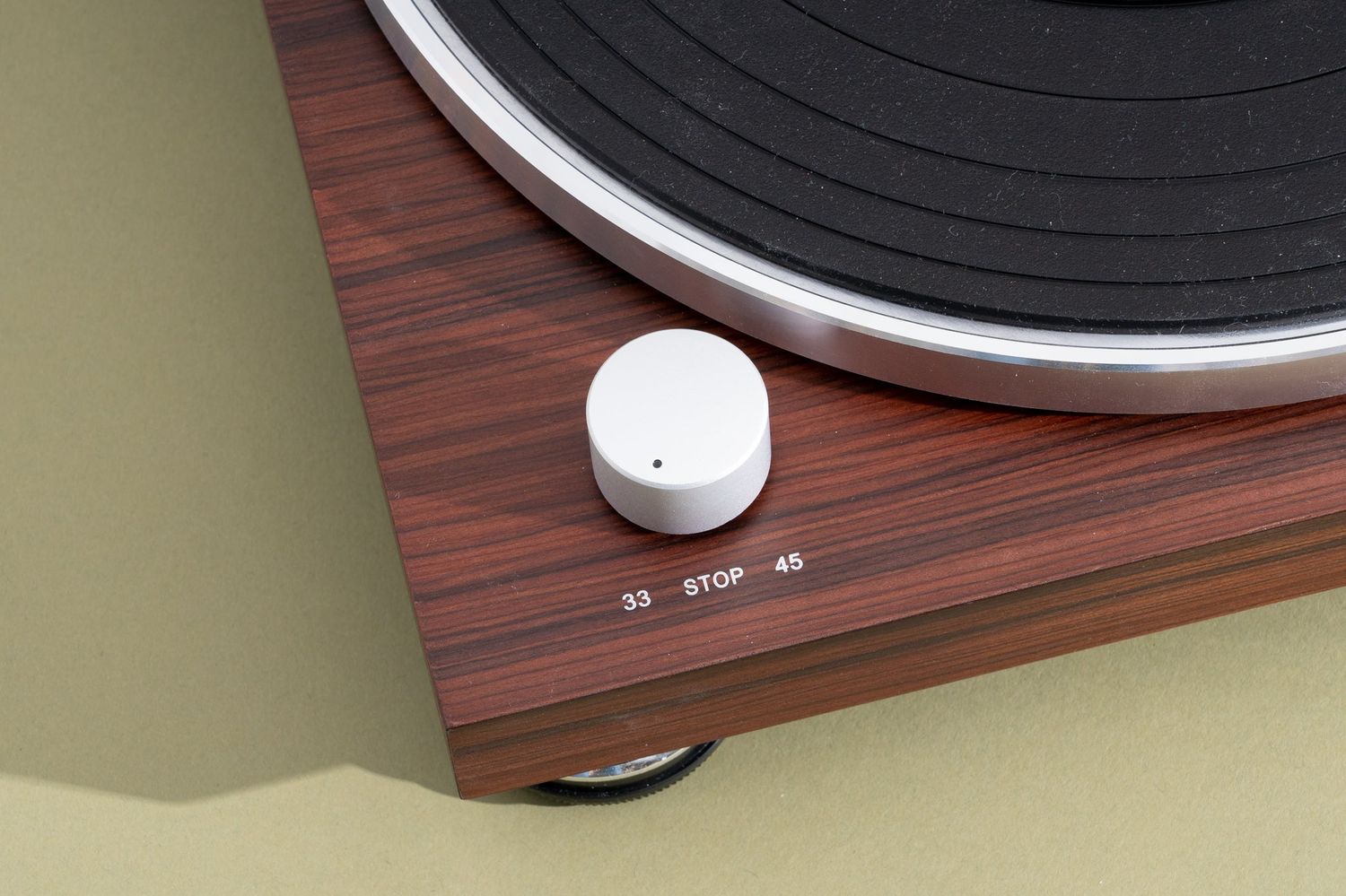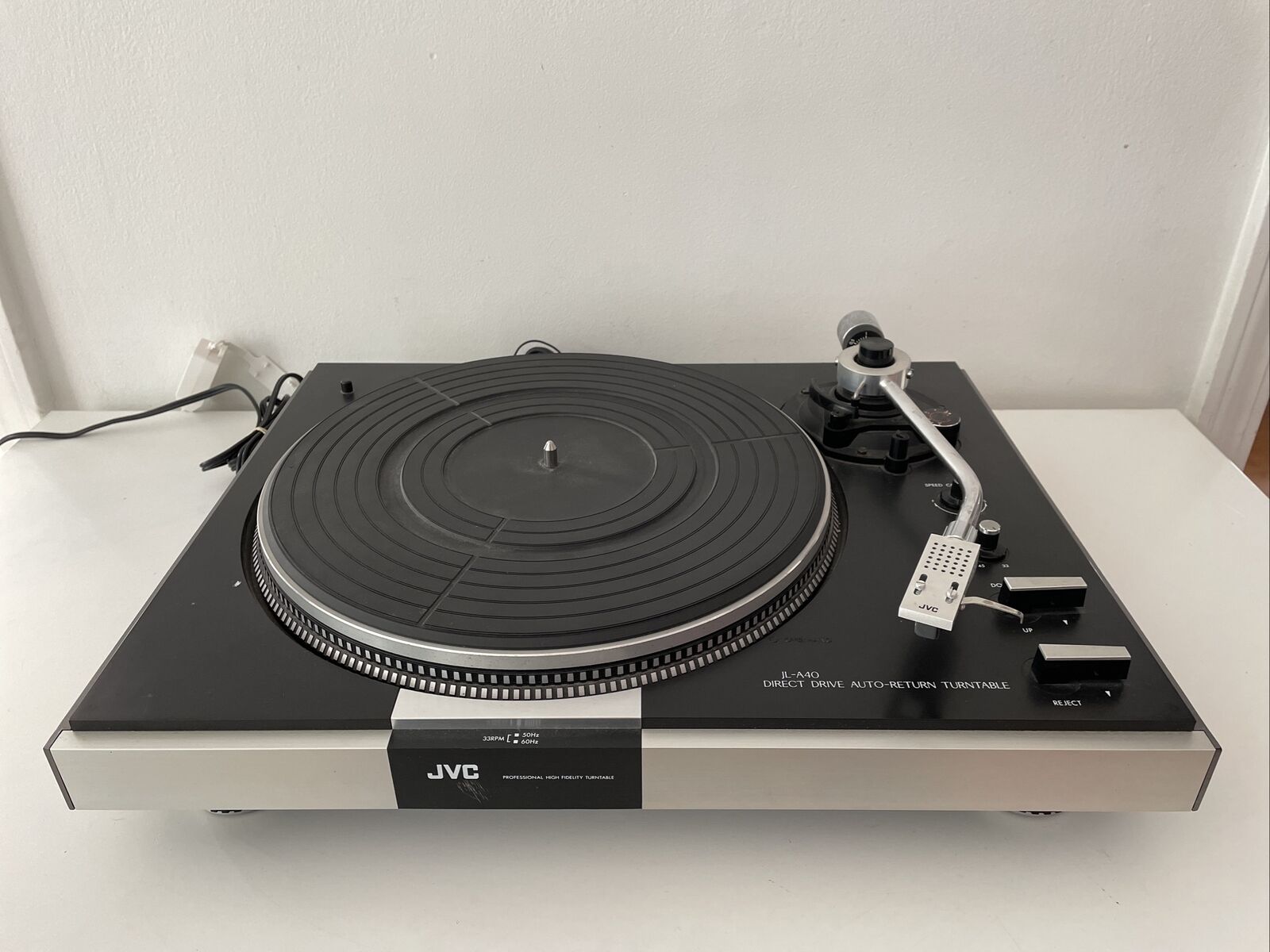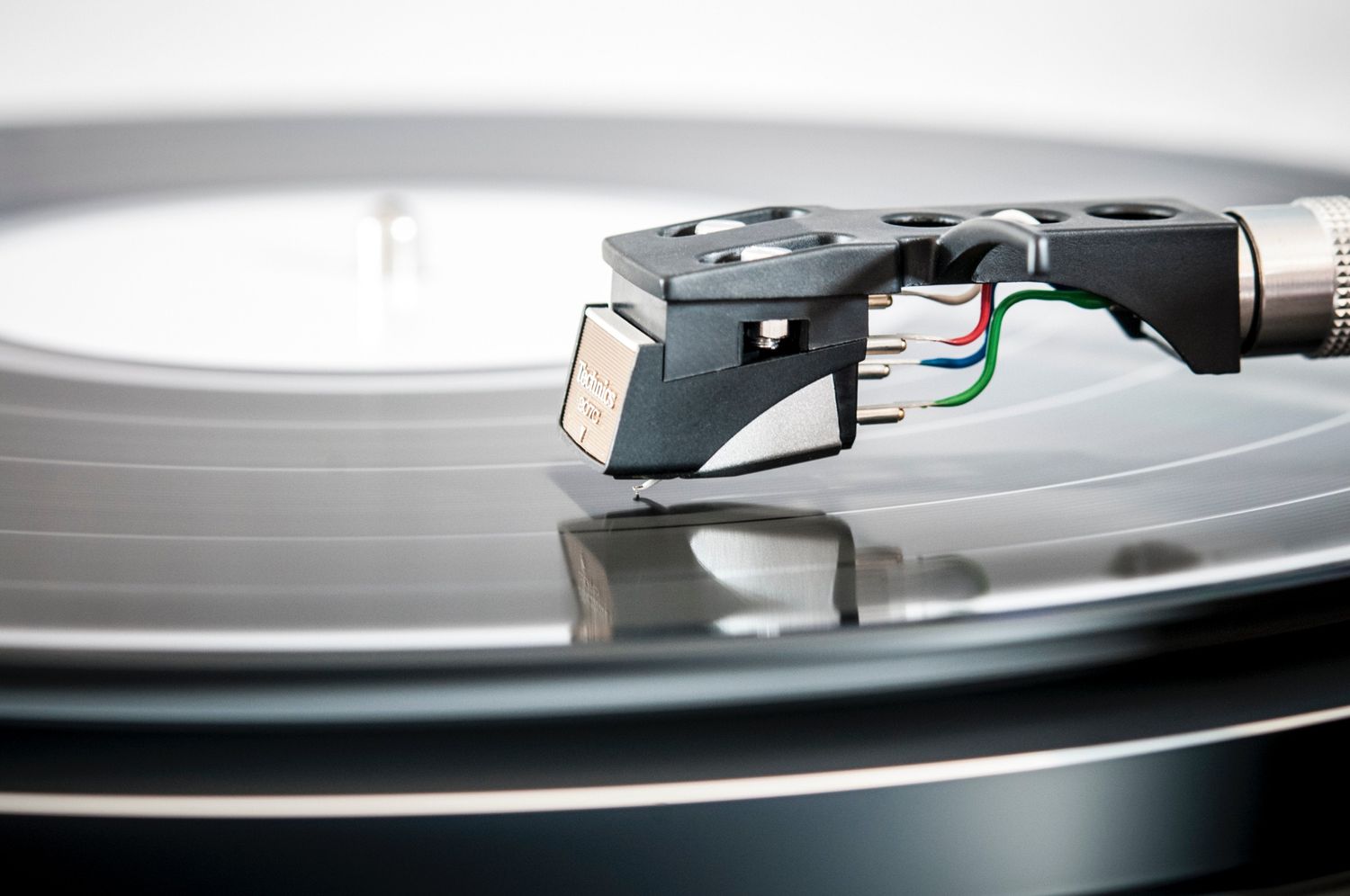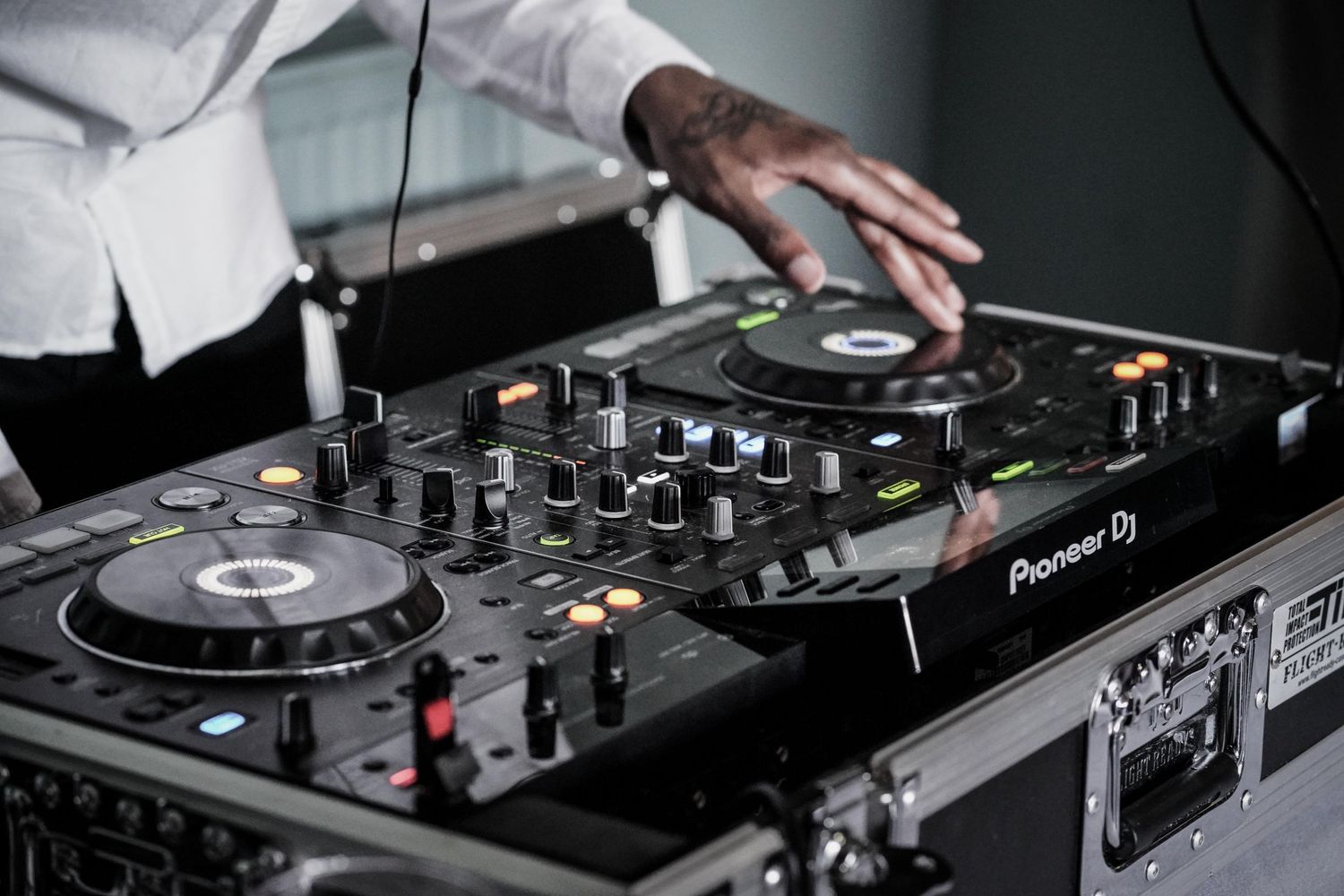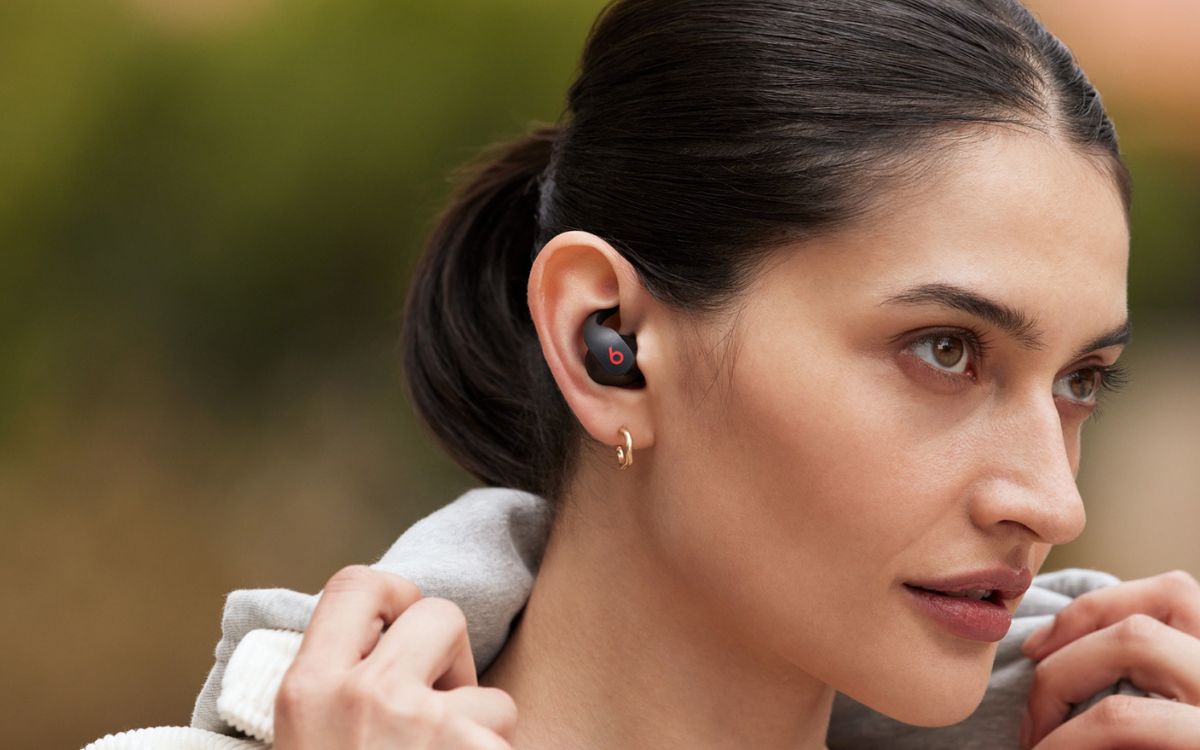Home>Devices & Equipment>Turntable>What Cartridge Fits My Turntable


Turntable
What Cartridge Fits My Turntable
Modified: January 22, 2024
Find the perfect cartridge for your turntable. Learn which cartridge is compatible with your specific model and enhance your vinyl listening experience.
(Many of the links in this article redirect to a specific reviewed product. Your purchase of these products through affiliate links helps to generate commission for AudioLover.com, at no extra cost. Learn more)
Table of Contents
Introduction
When it comes to the world of vinyl records and turntables, one essential component that often gets overlooked is the cartridge. The cartridge is the tiny, but mighty, piece of equipment responsible for reading the grooves on your vinyl and producing the sound that we all know and love.
Choosing the right cartridge for your turntable is crucial in ensuring optimal sound quality and performance. However, with so many options available on the market, finding the right one can sometimes feel overwhelming. That’s where this guide comes in to help.
In this article, we will delve into the world of turntable cartridges, exploring the different types available, explaining how to identify the compatibility of your turntable, and giving you tips on researching and finding the perfect cartridge. Whether you are a vinyl enthusiast looking to upgrade your existing cartridge or a beginner trying to understand the basics, this guide has got you covered.
So, if you’re ready to dive into the realm of turntable cartridges and unlock the full potential of your vinyl collection, let’s get started!
Understanding Turntable Cartridges
Before we jump into the different types of turntable cartridges, let’s first get a clear understanding of what a cartridge is and how it functions. Essentially, a turntable cartridge is a small device that houses a stylus, also known as a needle, which is responsible for tracing the grooves on your vinyl records.
The cartridge is mounted to the tonearm of the turntable, which is the arm that holds the needle. As the vinyl spins, the stylus moves along the grooves, detecting the modulations and converting them into an electrical signal. This signal is then amplified and sent to your speakers, producing the sound that you hear.
Turntable cartridges come in different shapes and sizes, and can be categorized into two main types: moving magnet (MM) and moving coil (MC).
1. Moving Magnet (MM) Cartridges:
MM cartridges are the most common type of cartridge found in turntables. They feature a replaceable stylus and a magnet that moves with the vibrations of the grooves. The magnet is surrounded by a set of coils that detect the movement and convert it into an electrical signal. MM cartridges are known for their good balance between affordability and sound quality, making them a popular choice among vinyl enthusiasts.
2. Moving Coil (MC) Cartridges:
MC cartridges, on the other hand, are a more advanced and higher-end option. In these cartridges, the coils are attached to the stylus, and they move along with it. This design allows for greater sensitivity and detail in sound reproduction. MC cartridges are generally more expensive than MM cartridges, and they require a compatible phono preamp or a dedicated MC phono stage to operate.
By understanding the different types of cartridges and their basic mechanisms, you can have a better grasp on their characteristics and make an informed decision when it comes to choosing the right one for your turntable.
Types of Turntable Cartridges
When it comes to turntable cartridges, there are several variations available, each with its own unique characteristics and sonic qualities. Let’s take a closer look at some of the popular types of cartridges:
1. Moving Magnet (MM) Cartridges:
As mentioned earlier, MM cartridges are the most common type found in turntables. They are known for their affordability, ease of use, and wide range of options available. MM cartridges produce a warm and smooth sound with a balanced frequency response. They are a great choice for both casual listeners and audiophiles on a budget.
2. Moving Coil (MC) Cartridges:
MC cartridges are the top-tier option, offering superior sound quality and precise tracking ability. They are known for their exceptional detail, accuracy, and dynamic range. However, they tend to be more expensive and require the use of a specialized phono preamp or MC phono stage to operate.
3. High-Output vs. Low-Output Cartridges:
High-output cartridges have a higher voltage output, which allows them to directly connect to phono inputs found on most receivers and amplifiers. They are more versatile and compatible with a wide range of equipment. On the other hand, low-output cartridges have a lower voltage output and require a step-up transformer or a dedicated MC phono stage to amplify the signal for proper playback.
4. Moving Iron (MI) Cartridges:
Moving Iron cartridges are a hybrid between MM and MC cartridges. They feature a diamond-tipped cantilever that moves within a magnetic field, producing a balanced and detailed sound. These cartridges offer good sound quality at a more affordable price compared to MC cartridges.
5. Moving Micro Cross (MMC) Cartridges:
MMC cartridges are a refined version of MM cartridges. They feature a micro-ridge stylus and improved cantilever design, resulting in enhanced tracking ability and finer detail retrieval. MMC cartridges are perfect for discerning audiophiles who want top-notch sound reproduction.
Remember, the type of cartridge you choose will greatly impact the overall sound quality and performance of your turntable. Consider your budget, listening preferences, and compatibility with your existing setup when making a decision.
Identifying the Cartridge Compatibility
When it comes to choosing a new cartridge for your turntable, it’s essential to ensure compatibility with your specific model. Here are a few steps to help you identify the cartridge compatibility:
1. Consult the Turntable Manual:
The first place to look for cartridge compatibility information is the user manual that came with your turntable. The manual will often provide details about the cartridge type (MM or MC) that is recommended or compatible with your specific model. It may even suggest specific cartridge brands or models that work best with your turntable.
2. Check the Mounting Type:
Turntable cartridges come in different mounting types, such as standard mount (also known as 1/2″ mount), P-mount, and T4P (Tangent 2000) mount. Make sure to check the mounting type your turntable requires before purchasing a new cartridge. Some turntables, especially older models, may have a proprietary mount, so be sure to research and find cartridges designed specifically for that mount.
3. Consider Tracking Force Range:
Each cartridge has a recommended tracking force range, which indicates the ideal range of weight applied to the stylus when it’s in contact with the record. It’s crucial to find a cartridge that falls within the tracking force range specified by your turntable manufacturer. Using a cartridge with a tracking force outside of the recommended range can lead to poor audio quality and potential damage to your records or the cartridge itself.
4. Check Tonearm Compatibility:
Some turntables have specific tonearm requirements in terms of tonearm mass or effective mass. It’s important to consider these specifications when selecting a cartridge. If the mass of the tonearm and the compliance of the cartridge are not well-matched, it can result in suboptimal sound quality and potential damage to the stylus or records.
5. Research Online Forums and Communities:
If you’re having trouble finding cartridge compatibility information for your specific turntable model, consider reaching out to online audio forums or communities. Fellow enthusiasts who own the same turntable may have firsthand experience and can provide valuable insight regarding cartridge compatibility options.
By following these steps and ensuring compatibility, you can confidently choose a cartridge that will optimize the sound quality of your turntable setup.
Matching Cartridge Specifications
When selecting a new cartridge for your turntable, it’s important to pay attention to certain specifications that will affect its compatibility and performance. Here are the key specifications to consider when matching a cartridge to your turntable:
1. Cartridge Type (MM or MC):
Determine whether your turntable is designed to accommodate a moving magnet (MM) or moving coil (MC) cartridge. This information can usually be found in the turntable’s user manual or specifications. Using the wrong type of cartridge can lead to poor sound quality and potential damage to the cartridge or records.
2. Mounting Type:
Check the mounting type required by your turntable. Common mounting types include standard mount (1/2″ mount), P-mount, and T4P mount. Ensure that the cartridge you choose is compatible with the mounting type on your turntable. Some turntables may have proprietary mounts, so it’s important to find cartridges specifically designed for those mounts.
3. Tracking Force Range:
Every cartridge has a recommended tracking force range, which indicates the ideal weight that should be applied to the stylus when it’s in contact with the record. It’s crucial to match the tracking force range specified by the cartridge manufacturer with the requirements of your turntable. Using too much or too little tracking force can lead to poor sound quality and potential damage to your stylus and records.
4. Compliance:
Compliance refers to the ability of the cartridge’s stylus to move in response to the modulations in the record grooves. It’s important to match the compliance of the cartridge with the effective mass of your turntable’s tonearm. A mismatch can result in improper tracking, distorted sound, and premature wear on the stylus and records.
5. Output Voltage:
Consider the output voltage of the cartridge, which determines the strength of the electrical signal produced. Ensure that the output voltage is compatible with your turntable’s phono stage or preamp. Low-output cartridges may require a step-up transformer or a specialized phono stage designed for low-output cartridges.
By carefully matching these cartridge specifications with your turntable, you can ensure optimal performance, longevity, and compatibility. Remember to consult the turntable’s manual or contact the manufacturer if you have any doubts or questions regarding cartridge compatibility.
Researching and Finding the Right Cartridge
Researching and finding the right cartridge for your turntable can be a daunting task with the multitude of options available. However, with a little guidance and research, you can make an informed decision. Here are some tips to help you in your search:
1. Read Reviews and Recommendations:
Start by reading reviews and recommendations from experts and fellow vinyl enthusiasts. Online forums, audio publications, and trusted websites often provide detailed reviews and comparisons of different cartridges. This can give you valuable insights into the sound quality, durability, and overall performance of various cartridges.
2. Consider Your Listening Preferences:
Think about the type of sound you prefer. Are you looking for a warm and smooth sound or a more detailed and analytical presentation? Understanding your preferences will help you narrow down the options and find a cartridge that suits your taste.
3. Set a Budget:
Decide on a budget for your cartridge. Cartridge prices can vary widely, depending on the brand, features, and materials used. Setting a budget will help you focus your search and prevent overspending.
4. Explore Brand and Model Reputation:
Research the reputation of different cartridge brands and models. Look for trusted and reliable brands that have a history of producing quality cartridges. Consider factors such as customer reviews, warranty, and customer support offered by the brand.
5. Check for Compatibility:
Ensure that the cartridge you are interested in is compatible with your turntable. Refer to the turntable’s manual or specifications for the recommended cartridge type, mounting, and tracking force range.
6. Seek Expert Advice:
If you’re still unsure about which cartridge to choose, don’t hesitate to seek advice from experts or professionals. Visit local audio stores or reach out to experienced turntable enthusiasts who can offer personalized recommendations based on your specific setup and preferences.
Remember, finding the right cartridge is a subjective process, and what works well for one person may not necessarily be the best fit for another. Take your time, do thorough research, and trust your ears to make the final decision that aligns with your listening goals and budget.
Installing a New Cartridge
Installing a new cartridge on your turntable may seem like a daunting task, but with a bit of care and attention, it can be done successfully. Follow these steps to ensure a proper installation:
1. Gather the necessary tools:
You will need a small screwdriver (typically a Philips or flat-head) to remove the screws holding the old cartridge in place. Additionally, have a pair of tweezers or needle-nose pliers handy to handle the wires.
2. Remove the old cartridge:
Turn off your turntable and gently remove the old cartridge by unscrewing the screws securing it to the tonearm. Be careful not to apply too much force or accidentally damage any components.
3. Disconnect the wires:
Once the old cartridge is removed, carefully detach the wires connected to the cartridge. Note which wire corresponds to each terminal or color-coded connection to ensure correct wiring for the new cartridge.
4. Prepare the new cartridge:
Before installing the new cartridge, check the manufacturer’s instructions for any specific steps or preparations required. For example, some cartridges may require aligning the stylus or adjusting the tracking force.
5. Connect the wires:
Take the wires from the tonearm and connect them to the corresponding terminals on the new cartridge. Ensure a secure and proper connection for each wire, making sure they are firmly attached without any loose strands.
6. Mount the new cartridge:
Align the cartridge with the mounting holes on the tonearm, taking care not to touch the stylus or apply excessive force. Use the screws provided with the new cartridge to secure it in place, ensuring it is properly aligned and level with the tonearm.
7. Set the tracking force and alignment:
Refer to the manufacturer’s instructions to set the tracking force and align the cartridge. This may involve adjusting the counterweight, anti-skate mechanism, or other tracking force adjustment features on your turntable. Follow the instructions carefully to ensure optimal performance and tracking accuracy.
8. Test and fine-tune:
Once the new cartridge is installed, lower the tonearm onto a test record and listen for any distortion or misalignment. Fine-tune the tracking force or alignment as needed to achieve the best sound quality and tracking performance.
Installing a new cartridge may require precision and patience. If you feel uncomfortable or uncertain about the process, it’s always a good idea to seek assistance from an experienced audio technician or turntable specialist.
Maintaining and Caring for Your Cartridge
Proper maintenance and care of your turntable cartridge are essential to ensure its longevity and optimal performance. Here are some tips to help you maintain and care for your cartridge:
1. Keep the stylus clean:
Regularly clean the stylus to remove any dust, debris, or residue that may affect its performance. Use a stylus brush or a specialized stylus cleaner to gently remove any buildup. Avoid using excessive force or cleaning agents that can damage the delicate stylus.
2. Handle the cartridge with care:
When handling the cartridge, be careful not to touch the stylus or the delicate components. Hold the cartridge by its body instead of the stylus or cantilever to avoid damaging them. Avoid dropping or mishandling the cartridge, as this can cause misalignment or damage.
3. Check the tracking force:
Regularly check the tracking force of your cartridge to ensure it is within the recommended range. Use a digital tracking force gauge or refer to the turntable’s manual for guidance. Incorrect tracking force can lead to distorted sound, excessive wear on the stylus, and damage to your records.
4. Adjust anti-skate and alignment:
Periodically check and adjust the anti-skate and cartridge alignment settings on your turntable. These adjustments help ensure balanced tracking and proper stylus contact with the record groove for optimal sound quality and minimal wear on the stylus and records.
5. Clean your records:
Dust and debris on your records can transfer onto the stylus and cartridge, affecting sound quality and causing premature wear. Clean your records regularly using a record cleaning brush or a record cleaning machine to minimize the buildup of dirt and dust.
6. Avoid sudden movements during play:
Avoid sudden movements or jolts to the turntable while the record is playing. Vibrations or sudden shocks can cause the stylus to skip or damage the record, and potentially, the cartridge itself. Ensure your turntable is placed on a stable surface and free from vibration-inducing objects.
7. Store your turntable properly:
When not in use, cover your turntable with a dust cover or a cloth to protect it from dust and debris. Additionally, store your records in sleeves to prevent any particles from coming into contact with the stylus and cartridge when changing records.
By following these maintenance and care tips, you can prolong the life of your cartridge and maintain its optimal performance. Regular cleaning, proper handling, and correct setup will ensure that you enjoy the best sound quality and longevity from your turntable cartridge.
Conclusion
Selecting and caring for the right cartridge for your turntable is crucial in achieving the best possible sound quality and performance. With the wide variety of options available, it’s important to consider factors such as cartridge type, compatibility, mounting, tracking force, and your personal listening preferences.
By understanding the different types of cartridges, such as moving magnet (MM) and moving coil (MC), and their unique characteristics, you can make an informed decision that aligns with your budget and sonic preferences.
Identifying the cartridge compatibility with your turntable is essential to ensure proper fit and function. Consult your turntable’s manual, consider the mounting type, tracking force range, and tonearm compatibility to select a cartridge that is suitable for your particular setup.
Researching and finding the right cartridge requires reading reviews, seeking recommendations from experts, considering your budget, and exploring reputable brands and models. Taking the time to research and listen to different options will lead you to a cartridge that delivers the sound quality and performance you desire.
Once you have chosen the right cartridge, proper installation is key. Follow the manufacturer’s instructions, handle the cartridge with care, and ensure correct wiring and alignment. Fine-tune the tracking force and alignment to achieve optimal sound reproduction.
Maintaining and caring for your cartridge is vital to its longevity and performance. Regularly clean the stylus, handle the cartridge with care, check the tracking force, adjust anti-skate and alignment settings, and keep your records clean to ensure the best possible sound quality and minimize wear on the stylus and records.
In conclusion, selecting, installing, and maintaining the right cartridge for your turntable takes time and attention to detail, but the rewards are well worth it. Enjoying your vinyl collection with a properly matched and well-maintained cartridge can elevate your listening experience to new heights of musical enjoyment.

